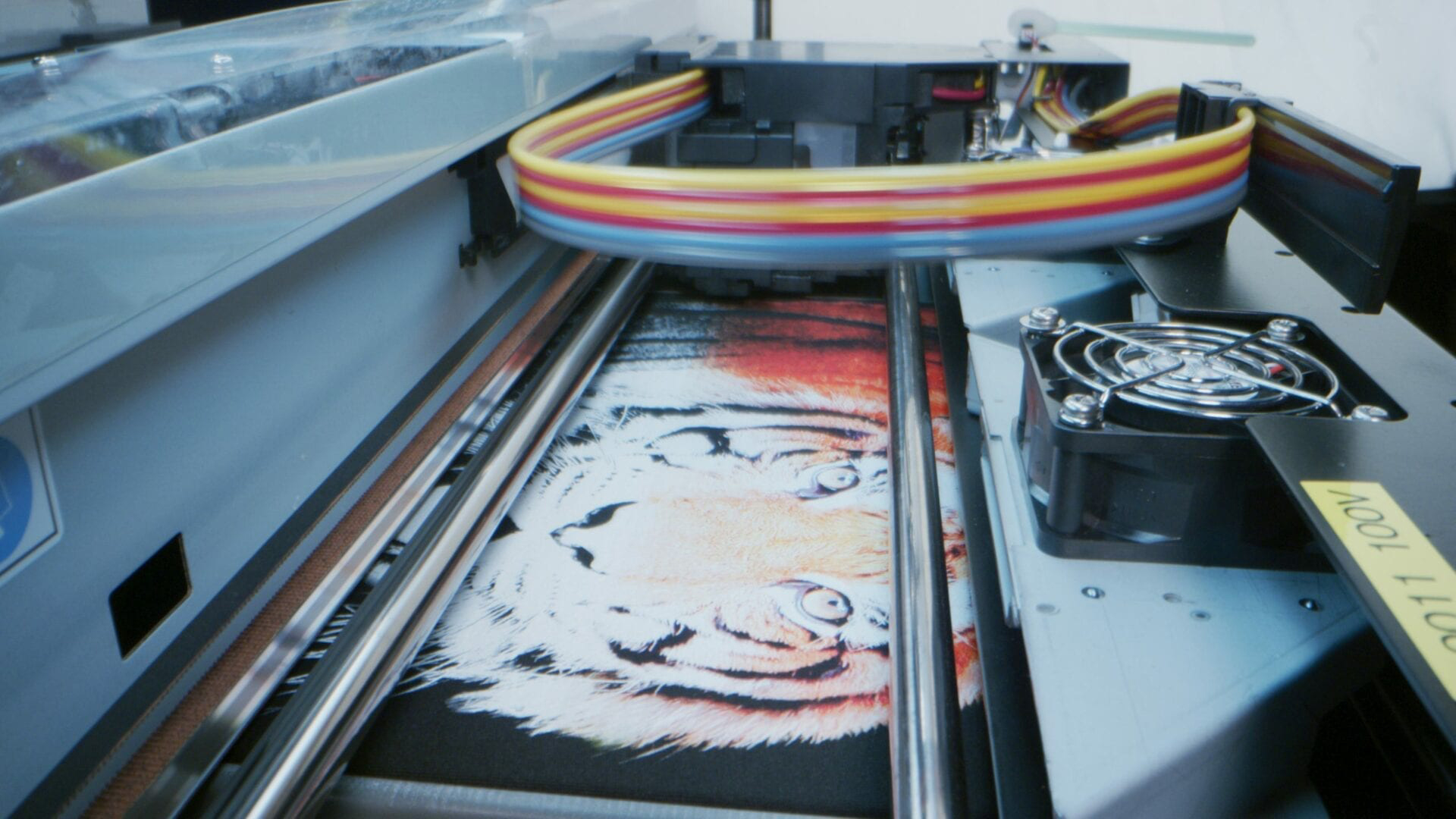Direct-To-Garment (also known as DTG) printing is almost exactly how it sounds. DTG printing is a process of printing directly on textiles and other items using inkjet technology. It really is as cool as it sounds.
A DTG Printer is similar to how your home office printer works. Except, instead of using paper, in a DTG printer it’s textiles like shirts, face masks, hoodies, shoes, etc. The printers have a flat surface, called a platen, that you lay your garment down onto. Once the print button has been pressed, this platen will go into the printer and start the print process. Once it’s done printing, the platen will come back out for you to see the printed product.

DTG was first introduced in the United States in 1996 and is a very young segment in the textile industry compared to other printing methods. In 2019, DTG was valued at over $2.5 billion with a compound annual growth rate of 10.5% through 2021. By 2024, this segment will grow to 40%, making DTG the fastest growing segment in the textile industry. With the amazing technology that is built in the RICOH Ri 2000, not only will you get amazing vibrant prints, but you will be able to print quicker too. In many cases, it is twice as fast compared to other printers.
To find out more about how Millcraft’s DTG Solutions can help you get into the game of DTG printing, reach out to one of our DTG Specialists.
Continue Reading

Around the Collar topic: Tank Top Time
As summer approaches, the need to offer a tank top to your customers is something that comes with the season. Working with tanks and sleeveless garments can be difficult to print on but if you have the proper tools, it can be a breeze. The biggest issue I have...

Heat Presses: Worth Their Weight in Gold!
A heat press is a machine that is needed when DTG printing, but did you know it also allows you to press designs onto many varied materials and surfaces, too? Heat Presses can be used in so many different ways. Direct to Garment needs them to cure the inks, but did...

